Eternal Horizon: George Morrison at the Bockley Gallery
The show of George Morrison's drawings at the Bockley Gallery is a joy to see, and the gallery is a fine addition to the cultural landscape of Minneapolis
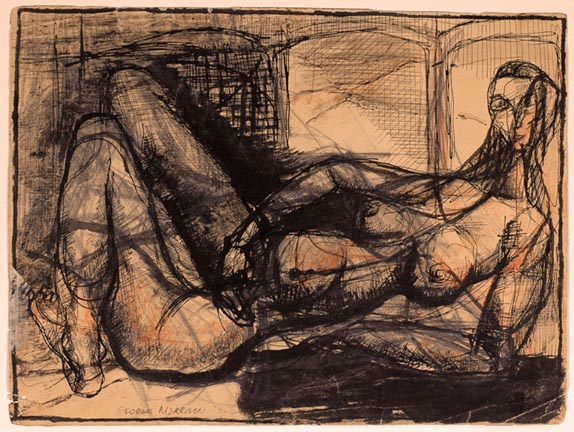
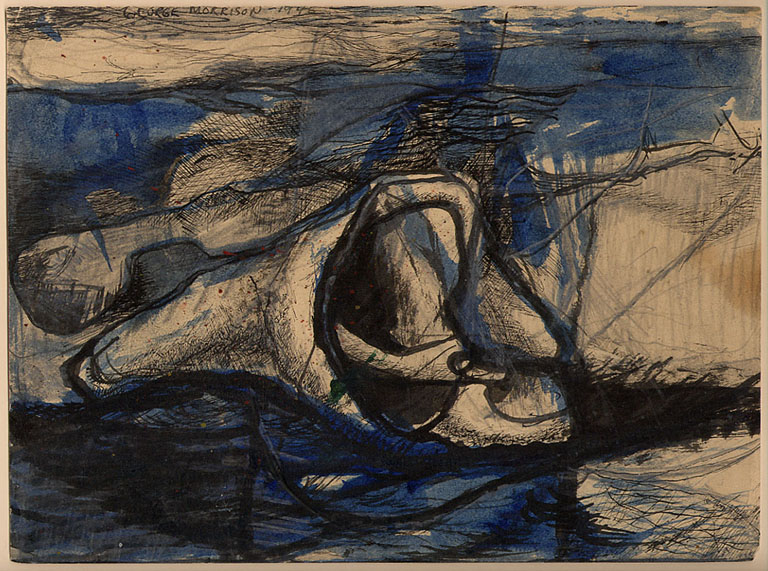
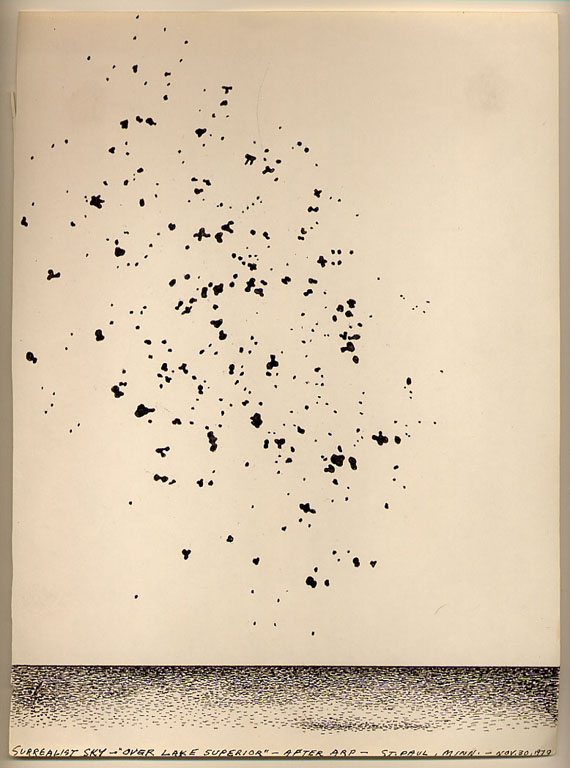
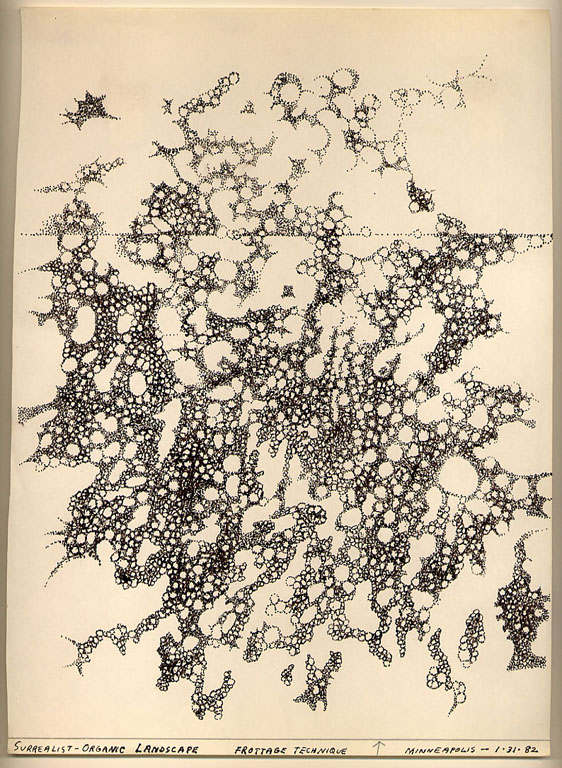
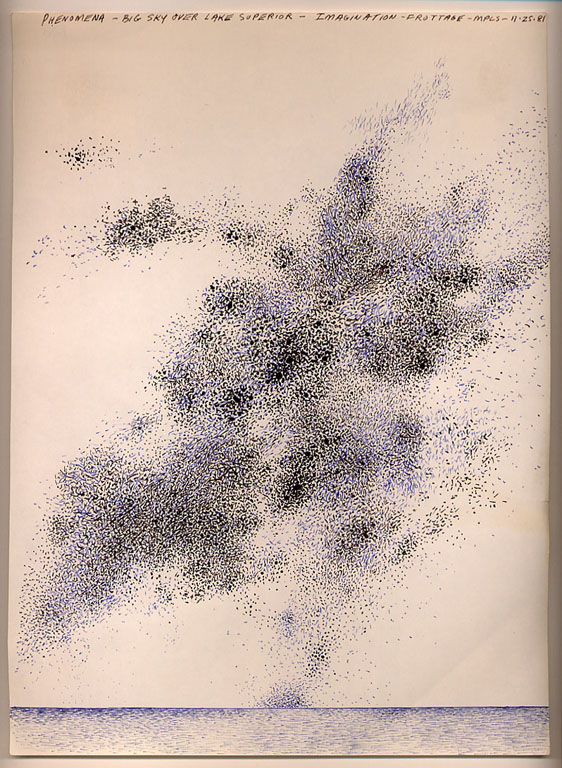
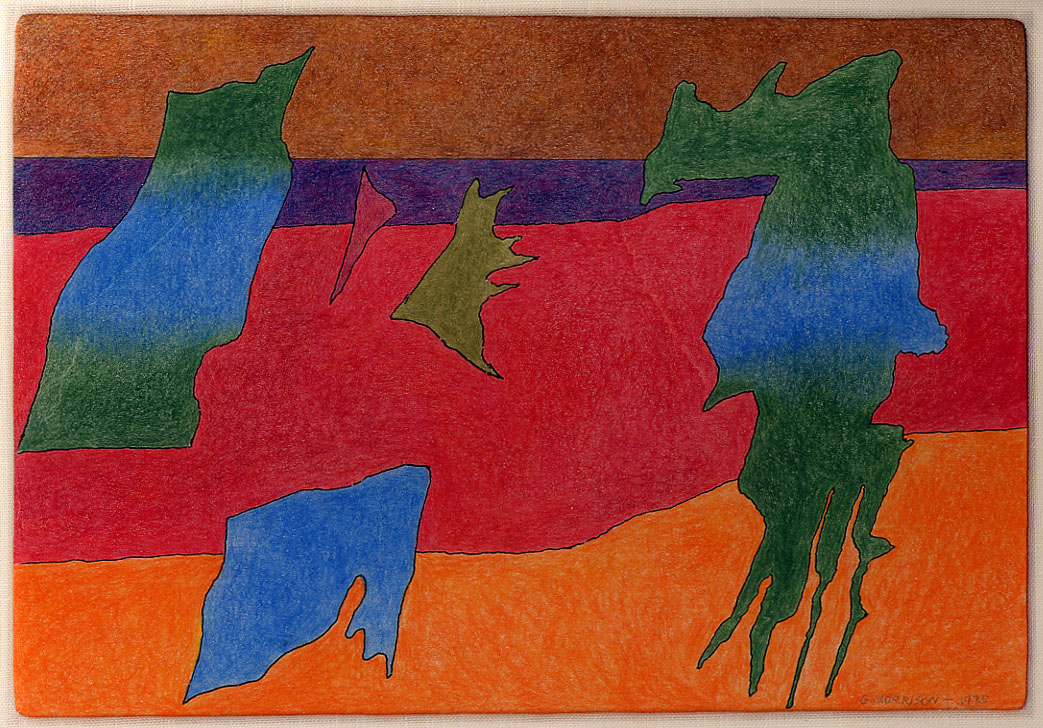
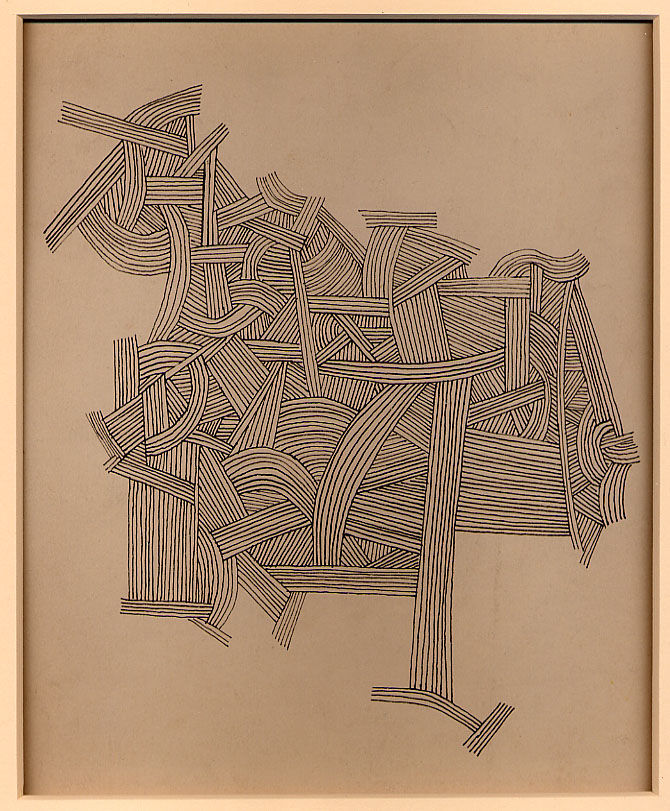
George Morrison, Works on Paper: 1944-99
March 18 – April 22
Bockley Gallery
2123 W. 21st Street, Minneapolis
First things first: this is a wonderful show, beautifully presented in a lovely small gallery. Each drawing in the show is tasty, and some are deeply profound.
The show is worthy of George Morrison, who’s one of the great artists of the state. We’d know that here even if his work wasn’t in the Met, even if he wasn’t chosen to be the artist whose work would inaugurate the new National Museum of the American Indian in Washington this year. He is well known for his found wood reliefs, his sleek wood sculptures, and foremost for his paintings; his drawings have also, over the years, been gradually revealed as a rich and strong body of work.
He’s known too for the extraordinary persistence of the horizon line in his work from the 1970s on. His life, lived on the shore of Lake Superior or the Atlantic, acquired a natural dialectic from the habit of seeing everything doubled, divided into two elements, sky and water, which were continually transforming into each other.
Morrison always drew. More than most modernist or abstract expressionist painters, Morrison relied on his drawing practice—his drawing habit—to keep the conduit between himself and the physical world open and flowing. He always considered the drawings to be important but they were not a well-known part of his oeuvre until the Walker mounted a show of his woven line drawings in 1974 (curated by Philip Larson). Jeannie Esterbrooks, his friend and partner in Duluth, organized with George a show of his drawings at her gallery in the nineties that opened to a wider public gaze the depth and richness of the trove of drawings that Morrison had carefully kept and dated from the late 1940s on.
Todd Bockley began purchasing the drawings when he had his gallery in the Wyman Building in Minneapolis. He organized several exhibitions involving George in the late 1980s, and some early 1990s shows of George’s works on paper and wood sculpture. There was another exhibition around the same time showing the “magic boxes” that George constructed. Bockley bought drawings from George and from his estate,; he’s also looked for Morrison’s works elsewhere; he notes in bemusement that he even found a couple on Ebay. The works in this show are largely from the Morrison estate.
The current show represents the whole length of Morrison’s career—1944- 1999. (Morrison died in 2000).
Bockley remarked, “One of the ways I put this installation together [with Glenn Hanson], we decided not to do it chronologically but stylistically—– I think there’s 3 periods, the formative figurative work from his midtwenties; then a period from when he was working in the vein of abstract expressionism, from his years in New York. Then I think that the horizon line really began to appear in the line drawings, which were the subject of a show at the Walker in 1974, curated by Philip Larson. “ These twisting line drawings use a kind of basketweave pattern to depict the changing currents of water and wind, and they have an almost imperceptible horizon line. Soon after, his driftwood wall reliefs used the horizon line in similar subtle ways (the Minnesota Museum of American Art has a great one of these).
“He was a super-strong abstract expressionist painter, but what was unique to him, what constitutes his contribution, is that whole great body of all those horizon paintings, and the drawings also,” Bockley noted. “When the horizon line appeared in his works—in late 60s and early 70s–that was when his roots began making themselves felt, and he moved back to Minnesota—he moved back to teach at the university. He came back as a visiting professor, and in 1973 was appointed a professor of visual arts. “
Morrison retired from teaching in 1983. During his years in St. Paul, he lived in a building that had been a church, with Hazel Belvo. (They had married in 1960.) The church sanctuary became a kind of gallery of his life, with magnificent works by his friends exhibited in it, a Clyfford Still, a Nevelson, and many others, as well as his own work.
Morrison’s drawings transcend the usual role of drawing, which is to serve as preparation or study for larger works. His body of drawings are works in their own right, and serve as a kind of private text that grounds the larger public works in a loved reality, a real nature that haunted and fascinated Morrison all his life. They’re the Dead Sea Scrolls of his work, the link to its breathing basis.
The selection of works in the show here are subtly observed, concerned with capturing phenomena, states of nature.
And what’s next for the Bockley Gallery? Todd Bockley had a gallery in the Wyman Building for 11 years, and closed it to pursue his own forms of making. But he missed it. “I really like to give people a voice, to help artists be seen. That’s very satisfying. I’d been doing shows in my house. But there’s a lot of really great talent here, great artists, and I started to feel the need to have a public space , to get reviews, to better serve the artists. And this space is great—the windows, the light, this school across the way, the children on the playground—I love being a neighborhood gallery, to foster cultural life in the city. The space is working really well—it is small, but it works well with large works as well as small ones. “
Todd Bockley represents mainly contemporary Native art, but he doesn’t like to market the work that way. He notes that “marketing art is about establishing your niche. But I don’t like to market all these artists as ‘contemporary Native art’—when I show Glenn Hanson , I don’t call him a ‘Scandinavian modernist.’” But for Bockley it was the strength of the art that brought him out of retirement as a gallerist: “Seeing the talent, my house wasn’t enough to do it justice. And then I found this beautiful space. The combination brought me out of retirement. “
Bockley Gallery artists will be seen in a lot of interesting places. There’s a show upcoming in London of Andrea Carlson and Starr Wallowing Bull at the October Gallery, and Jim Denomie and Andrea Carlson were recently chosen to produce a show at the Minneapolis Institute of Arts as part of the Minnesota Artists Exhibition Program.